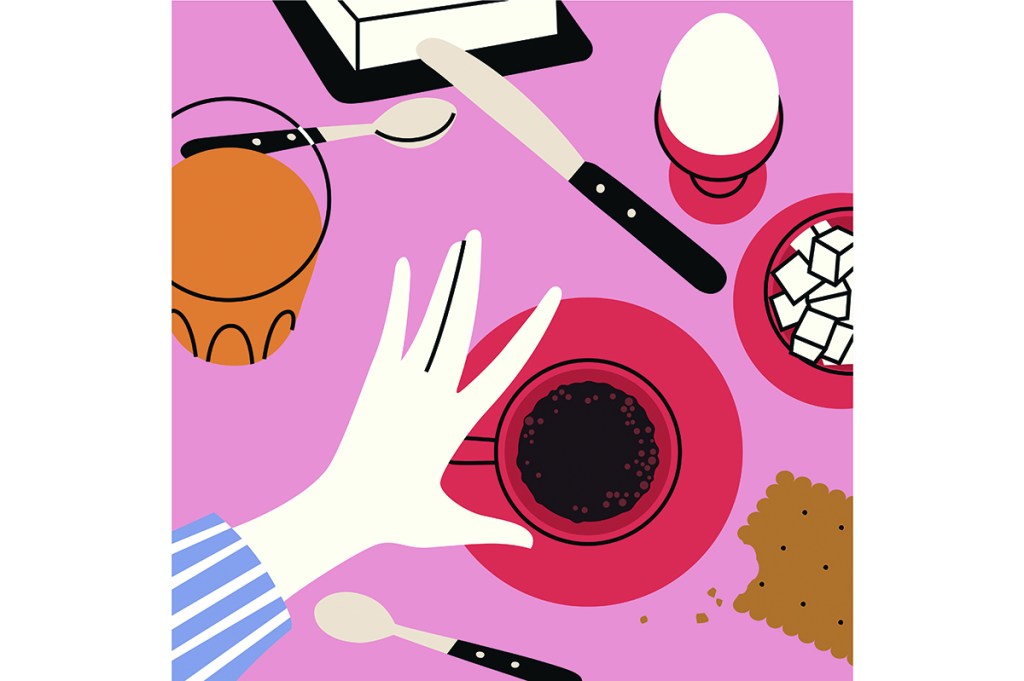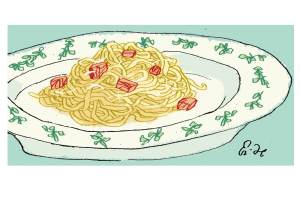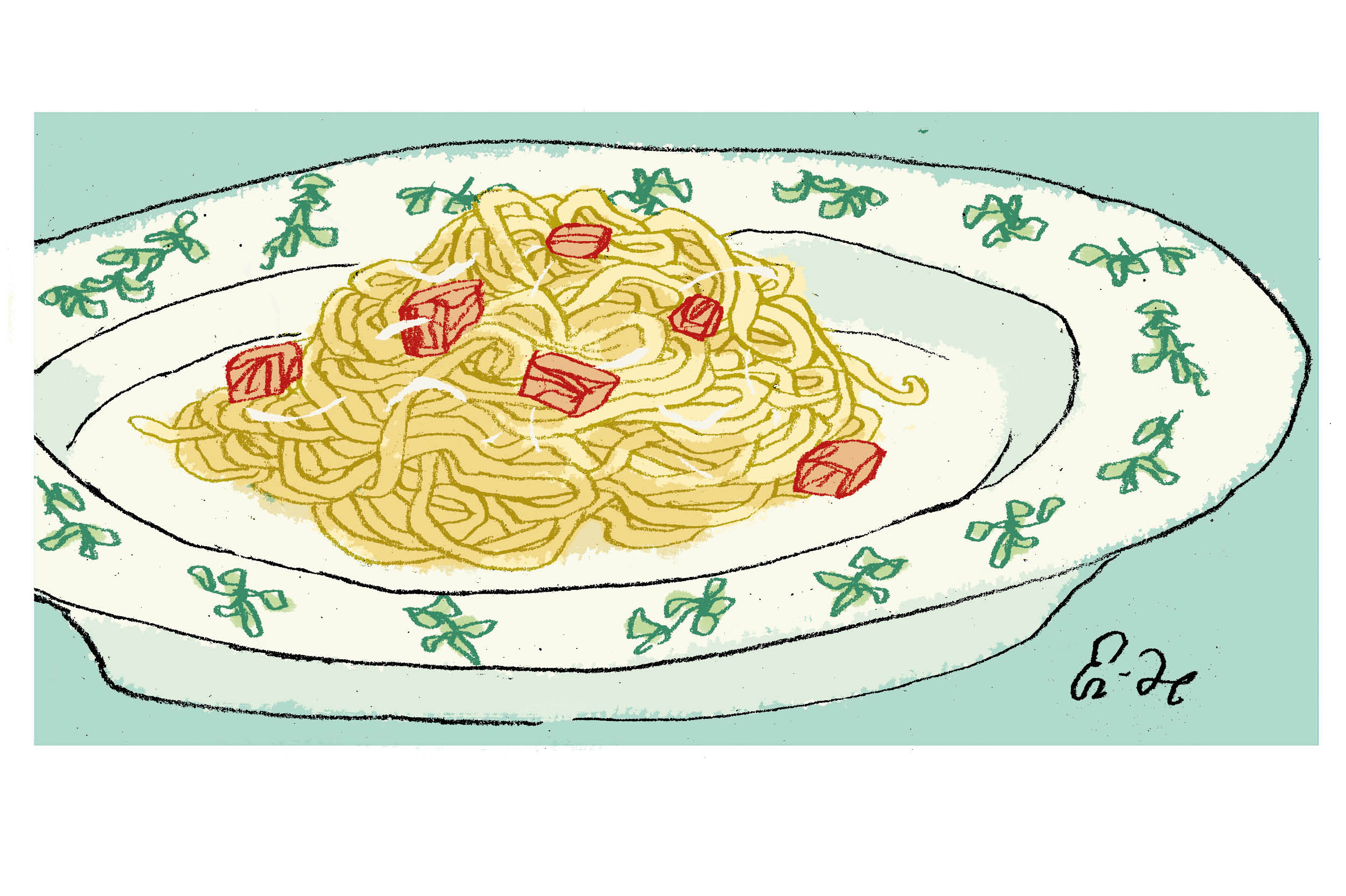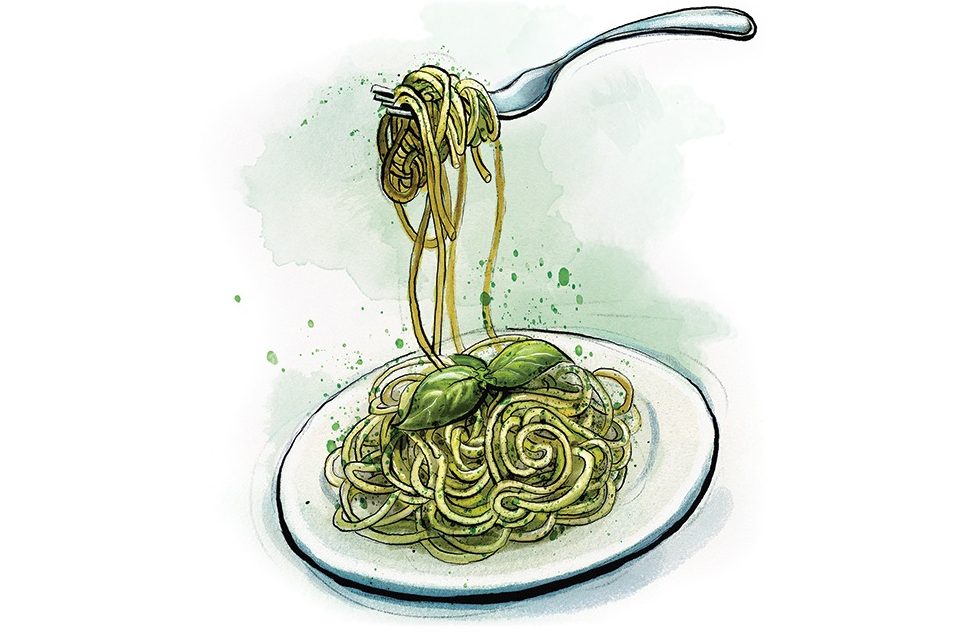However else we may criticize the late 90s and early 00s — its politics, its fashion, its music — this was undeniably the golden age of the celebrity chef. Barefoot Contessa, 30-Minute Meals and The Iron Chef franchises all debuted in the first decade of this millennium, minting stars like Bobby Flay, Guy Fieri and Nigella Lawson. I once found a collection of my brothers salivating over Giada de Laurentiis making meatballs on Everyday Italian, though they’d never demonstrated more interest in cooking than microwaving the odd Hot Pocket.
The mid-aughts brought on the glory years of the “hands and pans” videos: the aerial-view clips of disembodied hands assembling cheeseburger pretzel balls or eighteen-layer taco dip. I don’t believe a single person ever made a recipe from one of these videos, though Buzzfeed Tasty did build a media empire on the strength of their popularity. But out of the vacuum of home-cooking personalities created by all those phantom hands and invisible bloggers seemed to emerge a renewed desire for character, for catchphrases, for shtick. This craving is satisfied in abundance by two of the foremost millennial cooking personalities: Alison Roman and Molly Baz.
Baz and Roman are both, like me, thirtysomething white women who built their careers in New York and crack a lot of dumb jokes. My love of Alison Roman is well-documented — her cookbook Nothing Fancy got me through the darkest days of lockdown. Molly Baz’s first volume, Cook This Book, was published earlier this year. Both women produce food content for people like me: a grown-up, but not a grown-up with kids or cholesterol in mind. Adventurous with flavor and generous with puns, Roman’s and Baz’s recipes are, above all, personality-forward.
After her cancellation fiasco, Alison Roman left her perch at New York Times Cooking and became a YouTube and Substack content creator. I’m a subscriber — a questionable financial choice, given that annual patronage costs more than copies of both her bestselling cookbooks on Amazon. There’s a winking quality to the new content, called simply, with lower-case boredom, “a newsletter.” Roman’s snark has gotten her into PR trouble before, but now that she’s her own boss, she’s free to build her brand on her mocking, over-it persona.
She’s also free to phone it in. The newsletter often reuses recipes from Nothing Fancy. Sure, she built her name on being “unfussy,” but one gets the sense she’s not even trying anymore. Her cooking videos are filled with shots of her peering ironically at the camera, as if to say “Can you believe I’m doing this?” She occasionally actually says that: “I cannot believe I’m about to fry in my own home.” The recipes, when she includes them, are still good, but I admit to being a bit disillusioned by the persona.
Molly Baz is a different kind of millennial cooking personality: rather than affecting boredom, the Bon Appétit editor and cookbook author tries very hard indeed to be funny and relatable. Her Bon Appétit YouTube videos are filled with performative bloopers and ditzy abbreviations: “fingies” for fingers, “sando” for sandwich. Molly’s favorite food is Caesar salad, which she pronounces “see-sal”, and which she makes while wearing sneakers that read “Cea Sal” [sic] on the tongues, misspelled because, she says, “my husband f*cked up” the custom order. She lays it on as thick as that homemade cae-sal dressing. At first, I found this act more abrasive than charming.
Cook This Book turns the dial on the Molly Baz act up to ten. Marketed as a book for beginners, most recipes are accompanied by cartoon eggs with QR codes linking to instructional videos on basic kitchen skills. Like Clippy from Microsoft Word, but for chopping an onion. Her titling conventions make you blush for the dignity of the food itself: she has sections called “Noods” (noodles), “Chicken Licken,” and “So. Many. Veggies,” containing recipes such as “Crispy McCrisperson Chicken Thighs,” “Nicoise Sando,” and “Extremely Fried Eggs.” Her sides and condiments: “Jammy Pepps [bell peppers],” “Sweetie P’s [sweet potatoes]”, “Lemony Yog [yogurt]”, “Morty-d [mortadella]”. You may wonder what true beginner is willing to fuss with so many toppings and seasonings and ingredients, no matter how jokey the packaging.
I’m not sure whether any first-time cook has made “Chicken & Schmaltzy Rice with Lemony Yog,” but I have, and I regret to inform you that it’s probably the best thing ever to come out of my kitchen. I’ve swallowed my pride and made Baz’s ridiculously named mains, sauces, and desserts, and they have all tasted spectacular. Her over-the-top performance of girl-next-door regularity is a refreshing antidote to Roman’s glamorous, bored sarcasm.
But whatever your flavor, snark or goof, having our own fully fledged cooking personalities must be some kind of sign that my generation is growing up, mortgages and children notwithstanding. I recently perused TikTok for cooking trends and was disturbed — as one often is, perusing TikTok — that the predominant cooking trends on that platform don’t seem to be cooking trends at all, but rather Autonomous Sensory Meridian Response (#ASMR) trends. Therapy, in other words. Think of watching a very sharp knife chopping a large quantity of vegetables, or a steak being seared perfectly evenly, not to learn how but instead to experience a respite from the chaotic world beyond the screen.
Well, if any youths who watch food as ASMR are reading this, I want to say that chopping an onion well can be its own form of therapy. And I happen to know where you can find a QR code to teach you how.
This article was originally published in The Spectator’s February 2022 World edition.

























